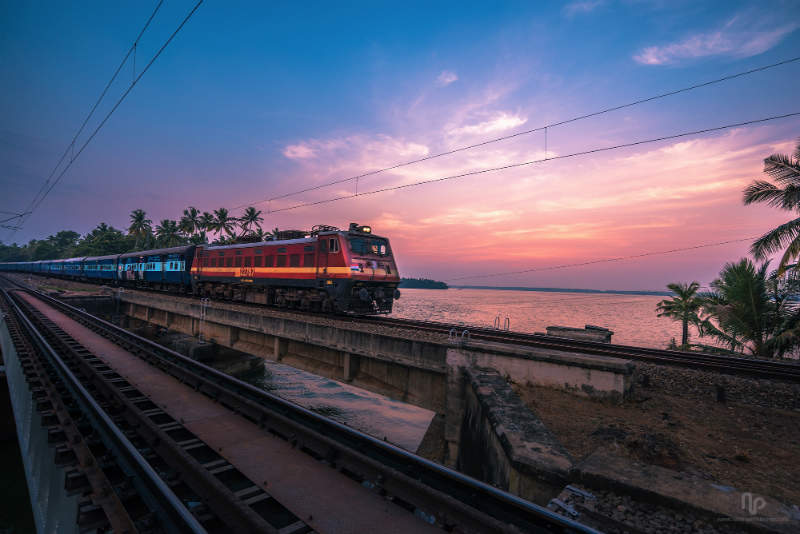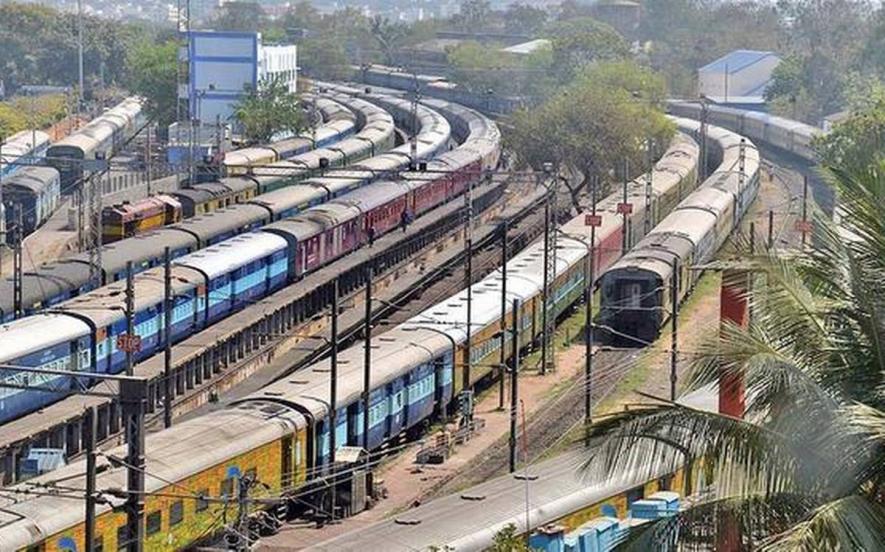Steps Taken By Government To Enhance The Level Of Passenger Safety In Railways
Replacement of conventional ICF design coaches with LHB design coaches is being done.

To enhance the level of passenger safety in Railways, the Government has taken the following steps:
i). Rashtriya Rail Sanraksha Kosh (RRSK) has been introduced in 2017-18 for replacement/renewal/up-gradation of critical safety assets, with a corpus of ₹ 1 lakh crores for five years. From 2017-18 till 2021-22, Gross expenditure of ₹ 1.08 lakh crores was incurred on RRSK works. In 2022-23, the Govt. extended the currency of RRSK for another period of five years with Gross Budgetary Support (GBS) of ₹ 45,000 crores.
ii). Electrical/Electronic Interlocking Systems with centralized operation of points and signals have been provided at 6521 stations up to 31.12.2023 to eliminate accident due to human failure.
iii). Interlocking of Level Crossing (LC) Gates has been provided at 11143 level Crossing Gates up to 31.12.2023 for enhancing safety at LC gates.
iv). Complete Track Circuiting of stations to enhance safety for verification of track occupancy by electrical means has been provided at 6558 stations up to 31.12.2023.
v). Detailed instructions on issues related with safety of Signalling e.g. mandatory correspondence check, alteration work protocol, preparation of completion drawing, etc. have been issued.
vi). System of disconnection and reconnection for S&T equipment as per protocol has been re-emphasized.
vii). All locomotives are equipped with Vigilance Control Devices (VCD) to ensure alertness of Loco Pilots.
viii). Retro-reflective sigma boards are provided on the mast which is located two OHE masts prior to the signals in electrified territories to warn the crew about the signal ahead when visibility is low due to foggy weather.
ix). A GPS based Fog Safety Device (FSD) is provided to loco pilots in fog affected areas which enables loco pilots to know the distance of the approaching landmarks like signals, level crossing gates etc.
x). Modern track structure consisting of 60 kg, 90 Ultimate Tensile Strength (UTS) rails, Pre-stressed Concrete Sleeper (PSC) Normal/Wide base sleepers with elastic fastening, fan-shaped layout turnout on PSC sleepers, Steel Channel/H-beam Sleepers on girder bridges is used while carrying out primary track renewals.
xi). Mechanisation of track laying activity through use of track machines like PQRS, TRT, T-28 etc to reduce human errors.
xii). Maximizing supply of 130 m/260 m long rail panels for increasing progress of rail renewal and avoiding welding of joints, thereby ensuring safety.
xiii). Laying of longer rails, minimizing the use of Alumino Thermic Welding and adoption of better welding technology for rails i.e. Flash Butt Welding.
xiv). Monitoring of track geometry by OMS (Oscillation Monitoring System) and TRC (Track Recording Cars).
xv). Patrolling of railway tracks to look out for weld/rail fractures.
xvi). The use of Thick Web Switches and Weld-able CMS Crossing in turnout renewal works.
xvii). Inspections at regular intervals are carried out to monitor and educate staff for observance of safe practices.
xviii). Web based online monitoring system of track assets viz. Track database and decision support system has been adopted to decide rationalized maintenance requirement and optimize inputs.
xix). Detailed instructions on issues related with safety of Track e.g. integrated block, corridor block, worksite safety; monsoon precautions etc. have been issued.
xx). Preventive maintenance of railway assets (Coaches & Wagons) is undertaken to ensure safe train operations and to keep a check on Rail Accidents across the country.
xxi). Replacement of conventional ICF design coaches with LHB design coaches is being done.
xxii). All unmanned level crossings (UMLCs) on Broad Gauge (BG) route have been eliminated by January 2019.
xxiii). Safety of Railway Bridges is ensured through regular inspection of Bridges. The requirement of repair/rehabilitation of Bridges is taken up based upon the conditions assessed during these inspections.
xxiv). Indian Railways has displayed Statutory “Fire Notices” for widespread passenger information in all coaches. Fire posters are provided in every coach so as to inform and alert passengers regarding various do’s and don’ts to prevent fire. These include messages regarding not carrying any inflammable material, explosives, prohibition of smoking inside the coaches, penalties etc.
xxv). Production Units are providing Fire detection and suppression system in newly manufactured Power Cars and Pantry Cars, Fire and Smoke detection system in newly manufactured coaches. Progressive fitment of the same in existing coaches is also underway by Zonal Railways in a phased manner.
xxvi). Regular counselling and training of staff is undertaken.
xxvii). Concept of Rolling Block has been introduced in Indian Railway (Open Lines) General Rules vide Gazette notification dt.30.11.2023, wherein work of maintenance /repair / replacement is planned up to 52 weeks in advance on rolling basis and executed as per plan.
1. Kavach is indigenously developed Automatic Train Protection (ATP) system. Kavach is a highly technology intensive system, which requires safety certification of highest order.
2. Kavach aids the loco pilot in train running within specified speed limits by automatic application of brakes in case Loco Pilot fails to do so and also help the train safely run during inclement weather.
3. The first field trials on the passenger trains were started in February 2016. Based on the experience so gained and Independent Safety Assessment of the system by a 3rd party (Independent Safety Assessor: ISA) three firms were approved in 2018-19, for supply of Kavach.
4. Subsequently Kavach was adopted as a National ATP system in July 2020.
5. Kavach has so far been deployed on 1465 Route km and 139 locomotives (including Electric Multiple Unit rakes) on South Central Railway.
6. Presently Kavach tenders have been awarded for Delhi – Mumbai (including Ahmedabad-Vadodra Section) & Delhi – Howrah (including Lucknow-Kanpur Section) corridors (approximately 3000 Route km). A part of these sectors (around 534 Route Km) passes through state of Gujarat and (around 943 Route Km) of Uttar Pradesh. The progress of main items related to Kavach is as under:
(i) Laying of Optical Fibre Cable : 3040 Km
(ii) Installation of Telecom Towers : 269 Nos.
(iii) Provision of equipment at Stations : 186 Nos.
(iv) Provision of equipment in Loco : 170 Locos
(v) Installation of Track side equipments : 827 Route Km
7. Indian Railways has also taken up preparatory works including survey, Detailed Project Report (DPR) and preparation of detailed estimate on another 6000 Rkm, Kavach is being provided on Indian Railway progressively.
8. Implementation of Kavach involves installation of Station Kavach at each and every station, installation of RFID tags throughout the track length and provision of Loco Kavach on each and every Locomotive running on Indian Railway, a communication backbone, requiring installation of Towers throughout the section, laying of optical Fiber throughout the section. Presently there are three Indian OEMs who are approved for Kavach. Efforts are being made to develop more OEMs to enhance the capacity and scale up the implementation of Kavach.
9. The Cost for provision of Track side including Station equipment of Kavach is approximately Rs. 50 Lakhs/Km and cost for provision of Kavach equipment on loco is approximately Rs. 70 lakh/ loco.
This information was given by the Minister of Railways, Communications and Electronic & Information Technology, Shri Ashwini Vaishnaw in a written reply to a question in Lok Sabha today.
What's Your Reaction?











































